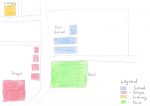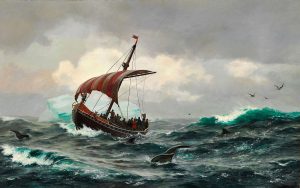 This week all of our students start to get into the focus areas of their units. For our youngest students that means starting to examine their “Favourite Place” – a multi-sensory examination which help them to explore a range of different kinds of experiences as they build a representation of their Favourite Place. Students in Years 1 to 3 start mapping their local area and students in Years 3 to 6 start their research topics for the term, each choosing a different explorer to investigate.
This week all of our students start to get into the focus areas of their units. For our youngest students that means starting to examine their “Favourite Place” – a multi-sensory examination which help them to explore a range of different kinds of experiences as they build a representation of their Favourite Place. Students in Years 1 to 3 start mapping their local area and students in Years 3 to 6 start their research topics for the term, each choosing a different explorer to investigate.
Foundation/Kindy/Prep to Year 3
 Students doing our stand-alone Foundation/Kindy/Prep unit (F.2) start examining the concept of a Favourite Place this week. This week is an introduction to a 6 week investigation, using all their senses to consider different aspects of places. They are focusing on thinking about what makes their favourite place special to them and how different people like different places. This provides great opportunities for practising skills of considering alternate points of view, having respectful discussions and accepting that others might have opinions different to their own, but no less valid. Students in integrated Foundation/Kindy/Prep (unit F.6) classes and in Years 1 (unit 1.2), 2 (unit 2.2) and 3 (unit 3.2) are doing some mapping this week, learning to represent school buildings, open areas, roads, houses, shops etc in a 2 dimensional plan. This exercise forms the foundation for an examination of the school and local landscape over the next few weeks.
Students doing our stand-alone Foundation/Kindy/Prep unit (F.2) start examining the concept of a Favourite Place this week. This week is an introduction to a 6 week investigation, using all their senses to consider different aspects of places. They are focusing on thinking about what makes their favourite place special to them and how different people like different places. This provides great opportunities for practising skills of considering alternate points of view, having respectful discussions and accepting that others might have opinions different to their own, but no less valid. Students in integrated Foundation/Kindy/Prep (unit F.6) classes and in Years 1 (unit 1.2), 2 (unit 2.2) and 3 (unit 3.2) are doing some mapping this week, learning to represent school buildings, open areas, roads, houses, shops etc in a 2 dimensional plan. This exercise forms the foundation for an examination of the school and local landscape over the next few weeks.
Years 3 to 6
 Students in Years 3 to 6 start their research projects this week. Students doing unit 3.6, Exploring Climates, will be investigating people who have explored extreme climates. Options include the first people to reach Australia during the Ice Age, Aboriginal people who lived in Australia’s central deserts, Europeans who explored central Australia, such as Sturt, Leichhardt and others. Students doing unit 4.2 will be investigating explorers of Africa and South America, including Ferdinand Magellan (and Elcano), Walter Raleigh, Amerigo Vespucci and many others. Students doing unit 5.2 are investigating explorers of North America. Far beyond Christopher Columbus, choices include Vikings such as Eric the Red, Leif Erikson and Bjarni Herjolfsson; Vitus Bering (after whom the Bering Strait is named), the French in the colony of Quebec, such as Jacques Cartier, Samuel de Champlain and Pierre François-Xavier de Charlevoix. Some 19th century women such as Isabella Bird (pictured on right) and Nellie Bly are also provided as options for research. Unit 6.2 examines explorers of Asia. In this unit, Year 6 students are encouraged to move beyond a Eurocentric approach to exploration and consider explorers from other areas such as Asia and Africa as well. Thus explorers such as Ibn Battuta, Ahmad Ibn Fadlan, Gan Ying, Ennin and Zheng He, join the list with Willem Barents, William Adams, Marco Polo and Abel Tasman. Women explorers include Gertrude Bell and Ida Pfeiffer. The whole question of women explorers, and the constraints under which they have operated in different cultures and time periods, can form part of a class discussion, either as extension or for classes with a particular interest.
Students in Years 3 to 6 start their research projects this week. Students doing unit 3.6, Exploring Climates, will be investigating people who have explored extreme climates. Options include the first people to reach Australia during the Ice Age, Aboriginal people who lived in Australia’s central deserts, Europeans who explored central Australia, such as Sturt, Leichhardt and others. Students doing unit 4.2 will be investigating explorers of Africa and South America, including Ferdinand Magellan (and Elcano), Walter Raleigh, Amerigo Vespucci and many others. Students doing unit 5.2 are investigating explorers of North America. Far beyond Christopher Columbus, choices include Vikings such as Eric the Red, Leif Erikson and Bjarni Herjolfsson; Vitus Bering (after whom the Bering Strait is named), the French in the colony of Quebec, such as Jacques Cartier, Samuel de Champlain and Pierre François-Xavier de Charlevoix. Some 19th century women such as Isabella Bird (pictured on right) and Nellie Bly are also provided as options for research. Unit 6.2 examines explorers of Asia. In this unit, Year 6 students are encouraged to move beyond a Eurocentric approach to exploration and consider explorers from other areas such as Asia and Africa as well. Thus explorers such as Ibn Battuta, Ahmad Ibn Fadlan, Gan Ying, Ennin and Zheng He, join the list with Willem Barents, William Adams, Marco Polo and Abel Tasman. Women explorers include Gertrude Bell and Ida Pfeiffer. The whole question of women explorers, and the constraints under which they have operated in different cultures and time periods, can form part of a class discussion, either as extension or for classes with a particular interest.
Teachers have the option for student to present the results of their research (which will cover the next 4 weeks) as a slide presentation, using software such as Powerpoint, a poster, a narrative, a poem, a short play or any other format that is useful, and some teachers have managed to combine this with requirements for other subject areas, such as English or Digital Technologies, thereby making the exercise even more time-efficient.



I was very impressed with the layout and design of the Mirobot. I purchased the kit which required soldering. The…
Ian Cunningham